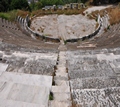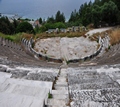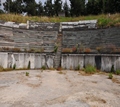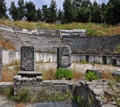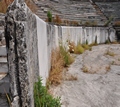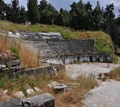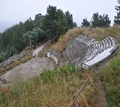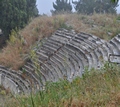
The ancient theater located in the archaeological site of the ancient city of Thassos, is built in a natural hollow of the hill, while its rear part rests on the wall. Its existence is already attested from the 5th century. BC by Hippocrates. We do not know the form that the chamber and the orchestra had in classical times. However, the theater was covered with marble in the 4th century BC.
In the Roman era the nave was extended, the stage was rebuilt, the orchestra was enlarged and turned into an arena with the addition of a chest. The hollow we see today, with three steps dividing it into four stands, is the one built during Roman times. At the beginning of the 3rd c. BC the tent was built which had a marble facade. The proscenium was dedicated to the god Dionysus by Thasios Lysistratos, son of Codis, while it was made up of 12 Doric colonnades. The foreground floor was built in the Doric style, but on a smaller scale. During this period, theatrical activity is intense. In fact, for the holidays (Dionysia, Chorea) foreign artists came, such as Ariston from Miletos who played the flute.
From the 1st c. AD, the theater was used for hunting - beast fights (venationes) and gladiatorial contests. The orchestra was transformed into an arena by placing heavy doors that closed the passages. At the end of the 2nd c. AD a parapet with a balustrade was placed at the bottom of the hollow steps, and important alterations were then made to the building of the tabernacle.
At the foot of the acropolis, below the theater, was the sanctuary of Dionysus. Inside the triangular enclosure, two temple-shaped sponsorship monuments were discovered, with only the foundations of one visible today, and two more ancient altars. The monuments housed statues, works of Athenian sculptors of the 4th c. BC.
Editor: Fotini Anastasopoulou










